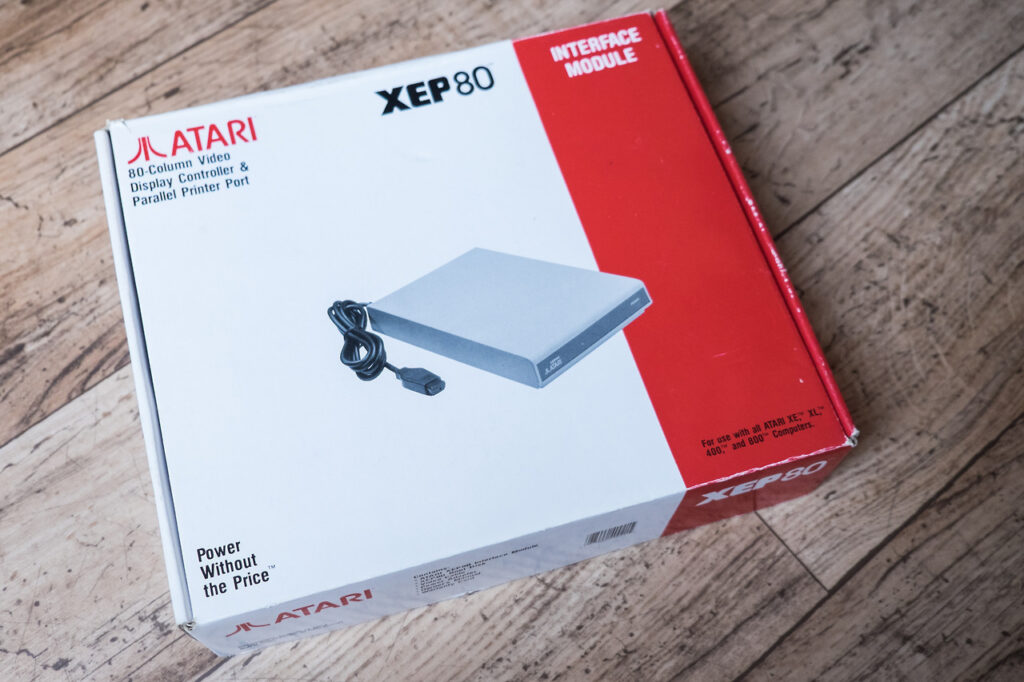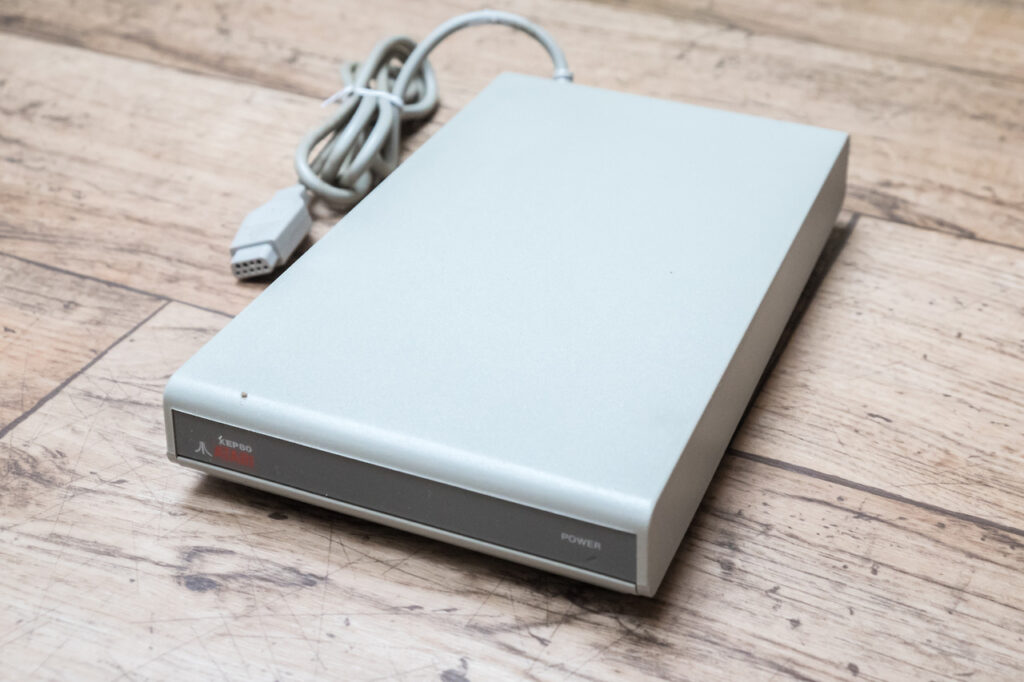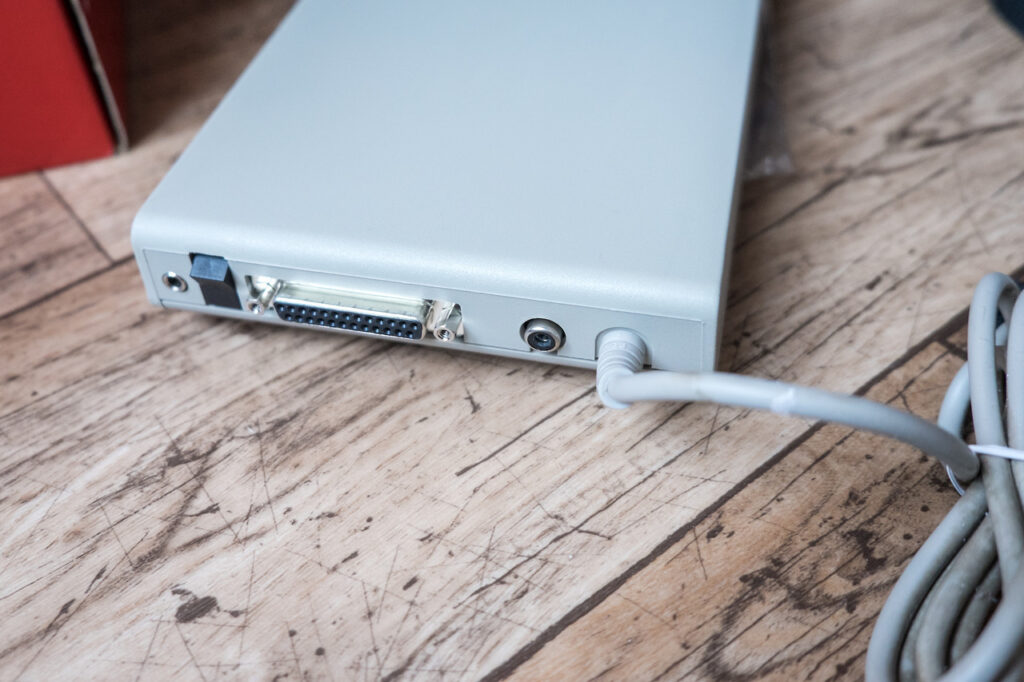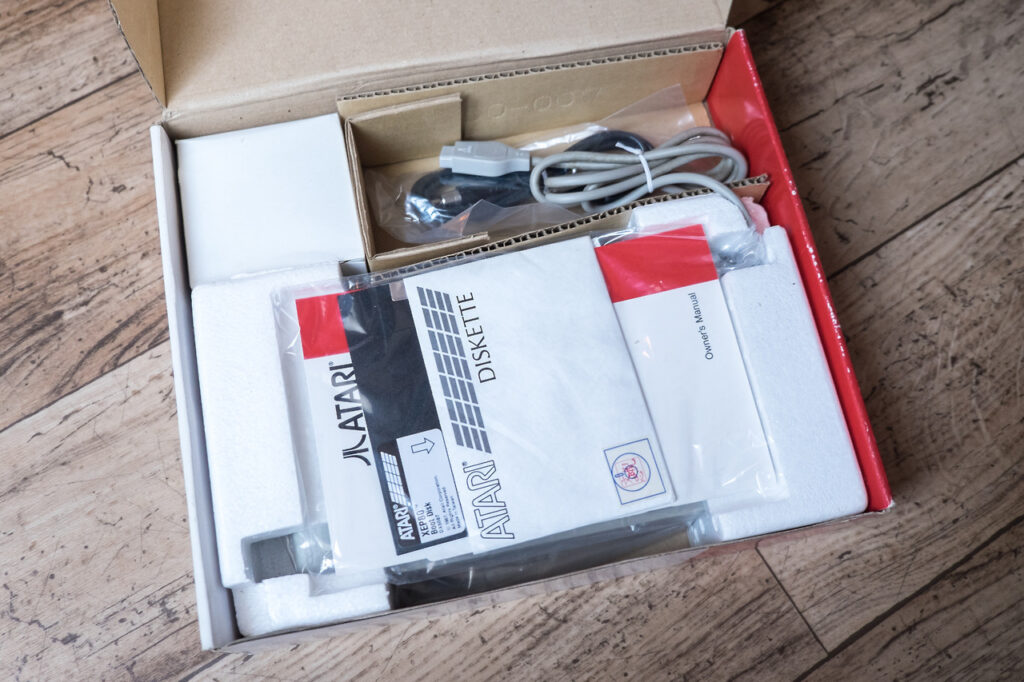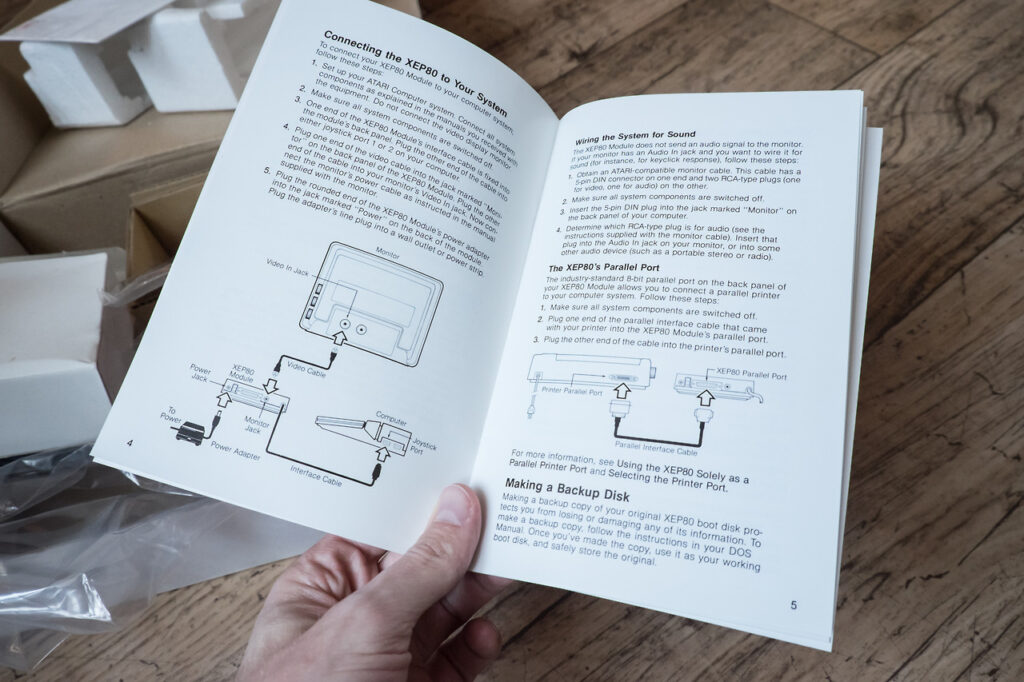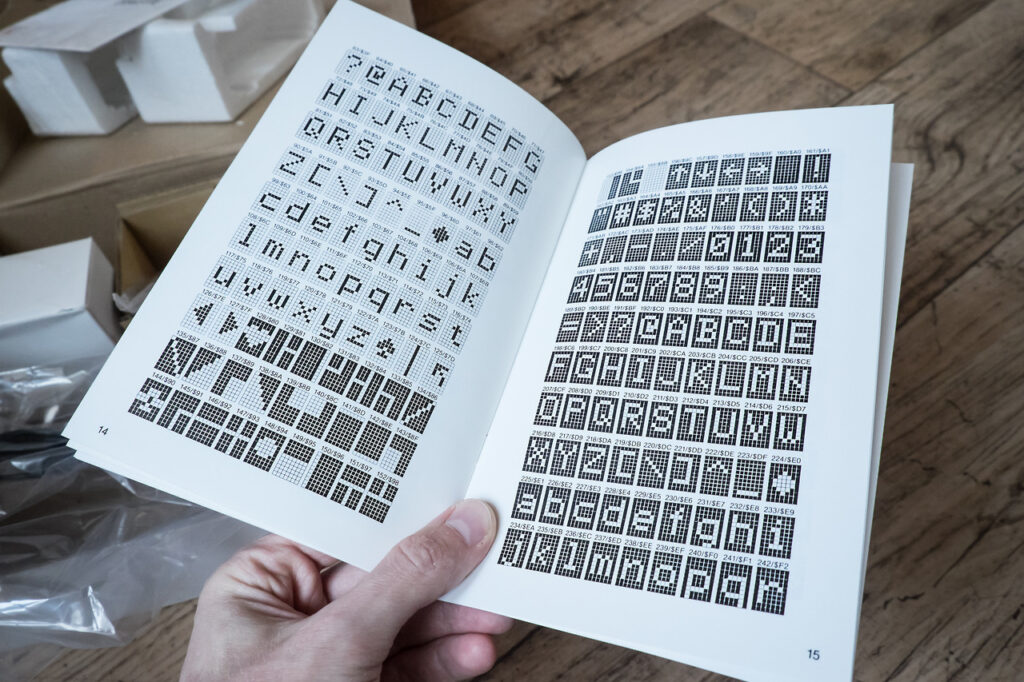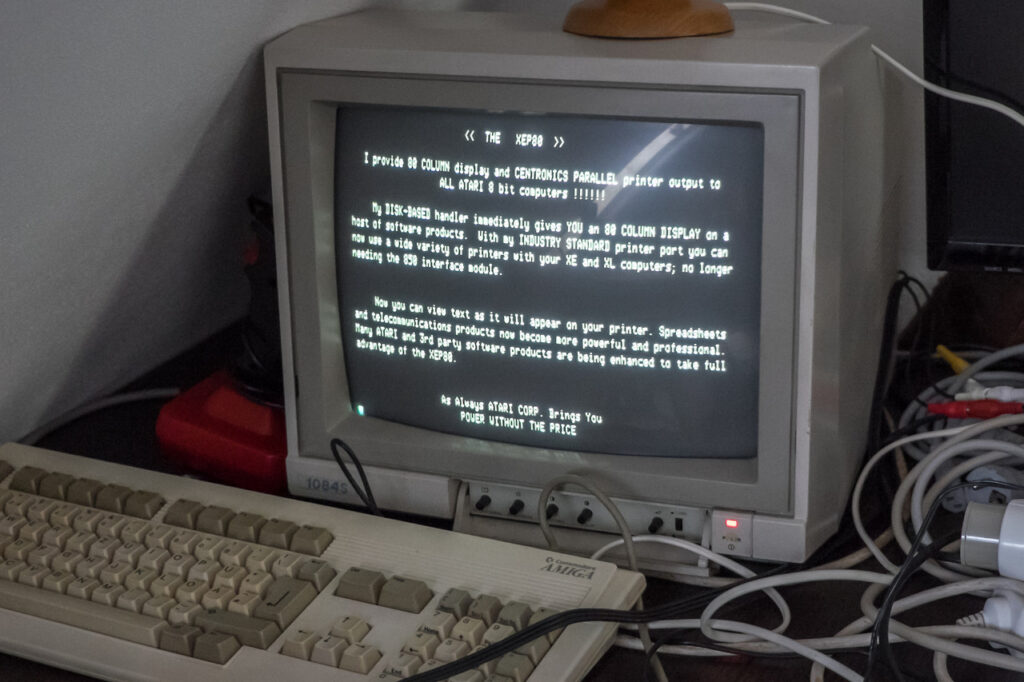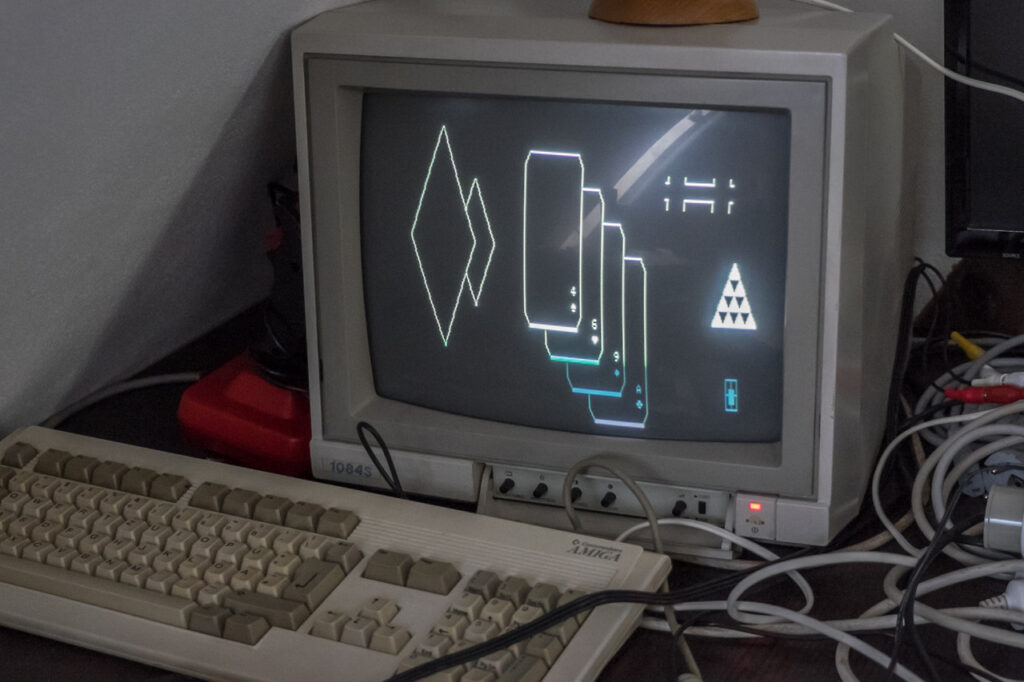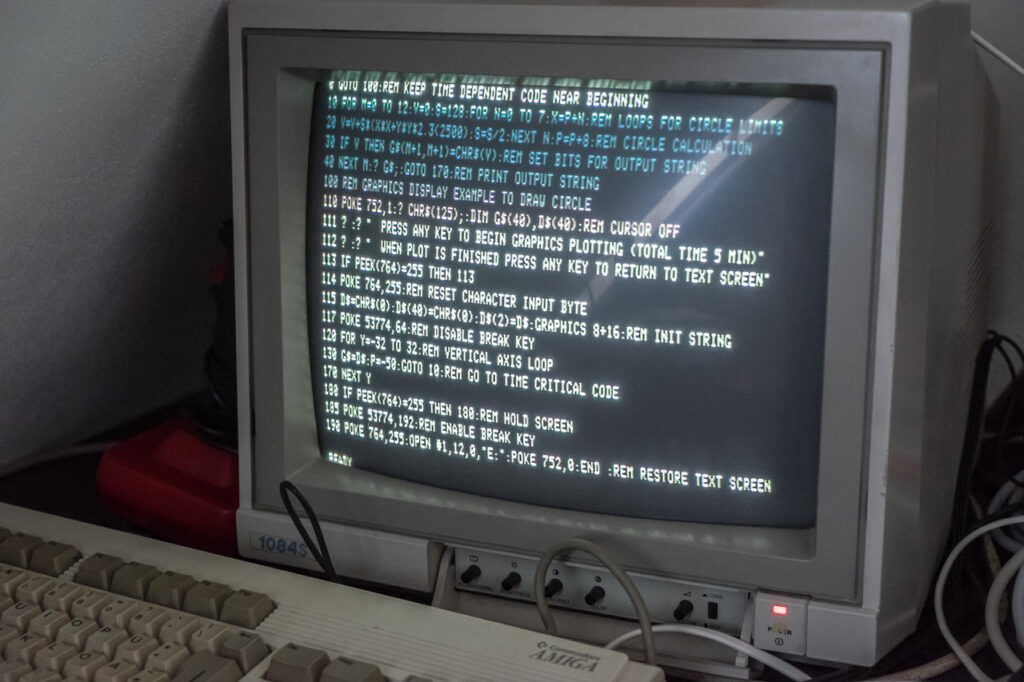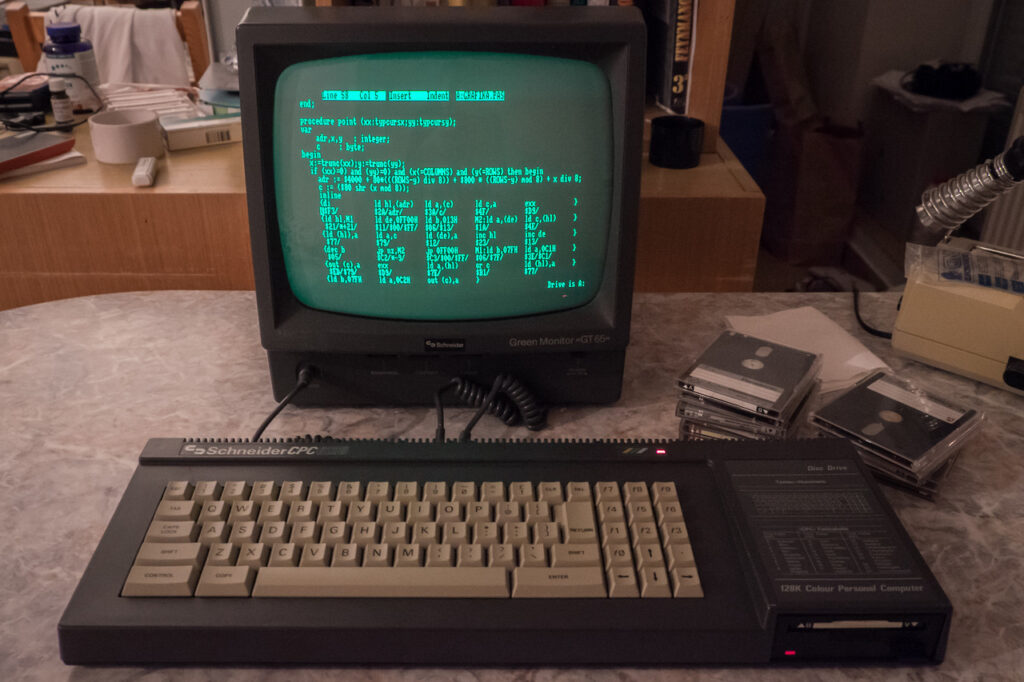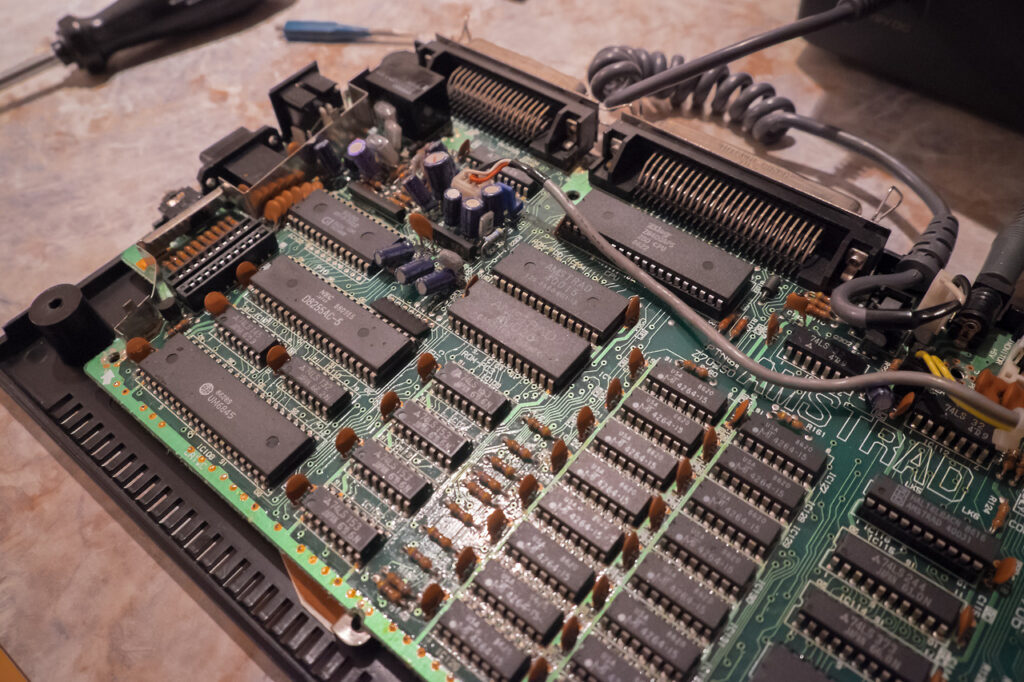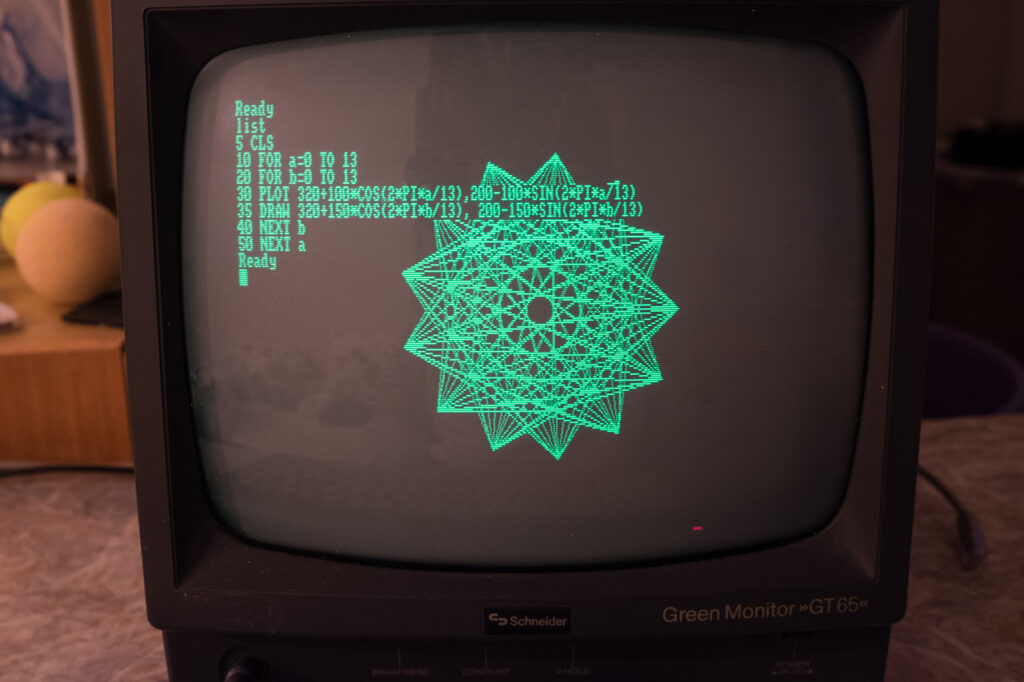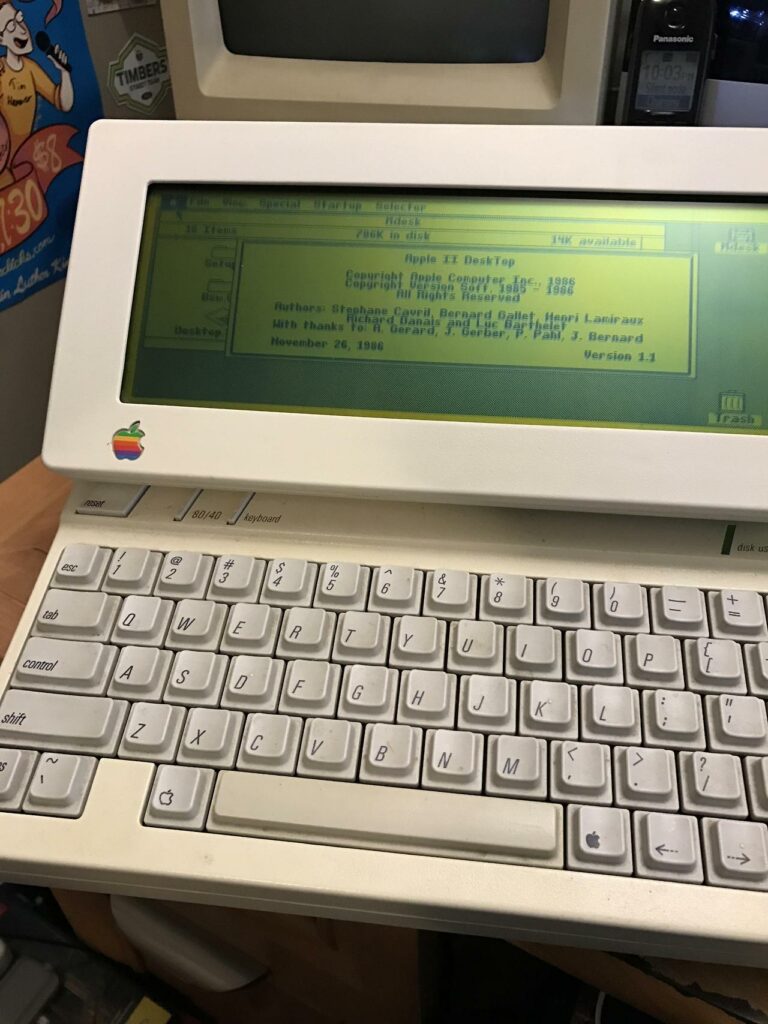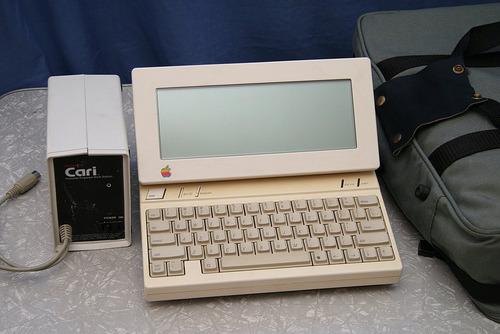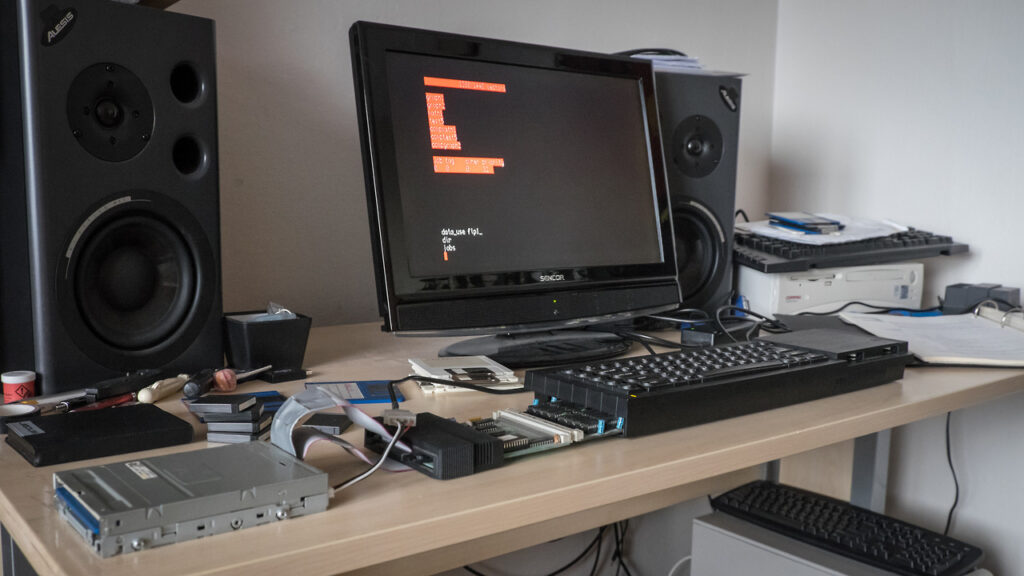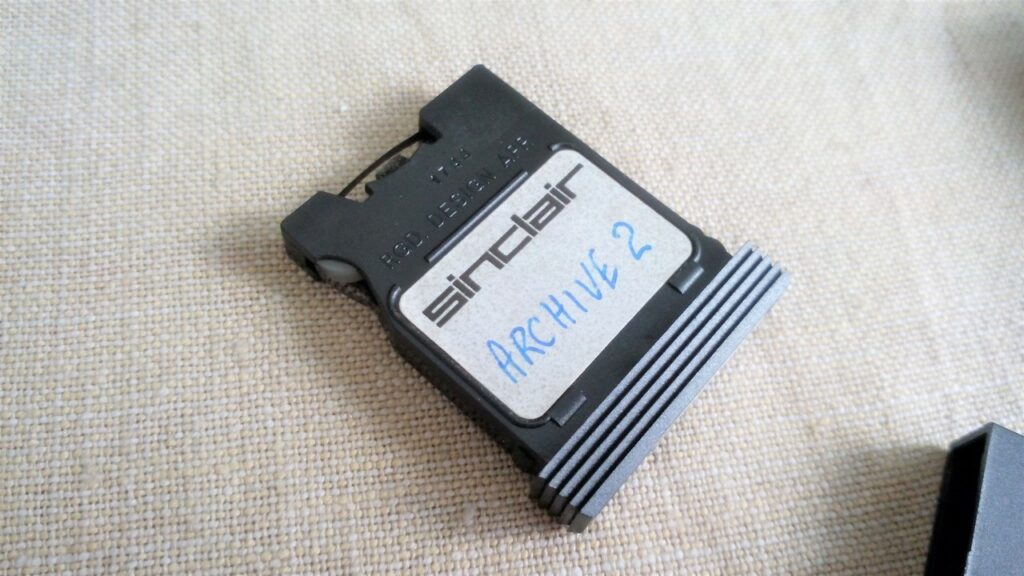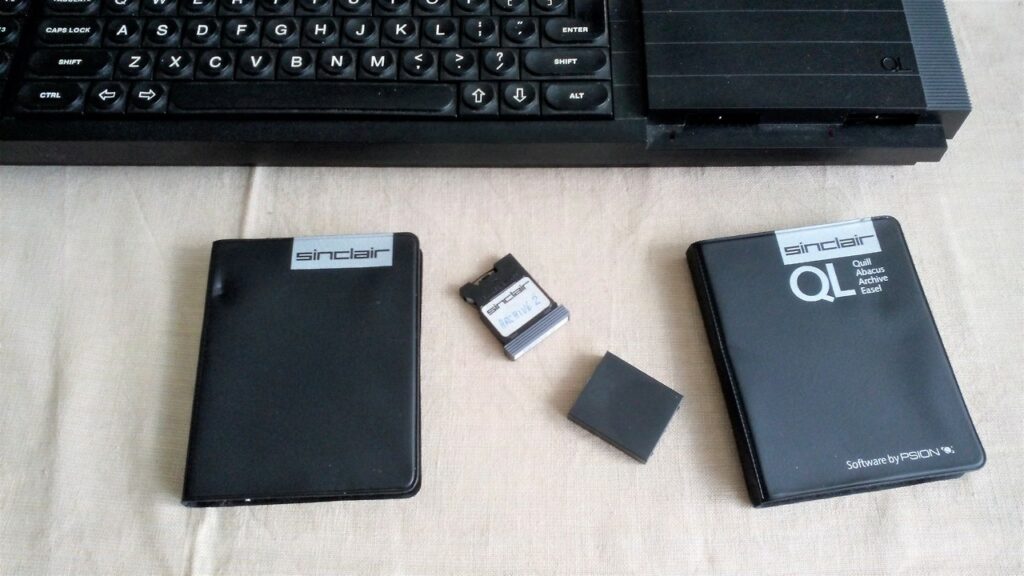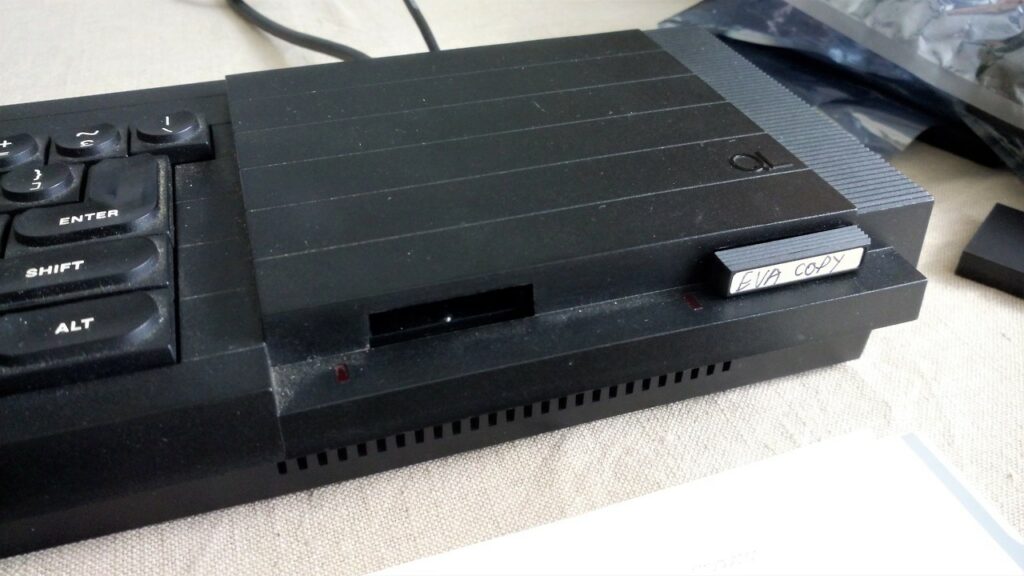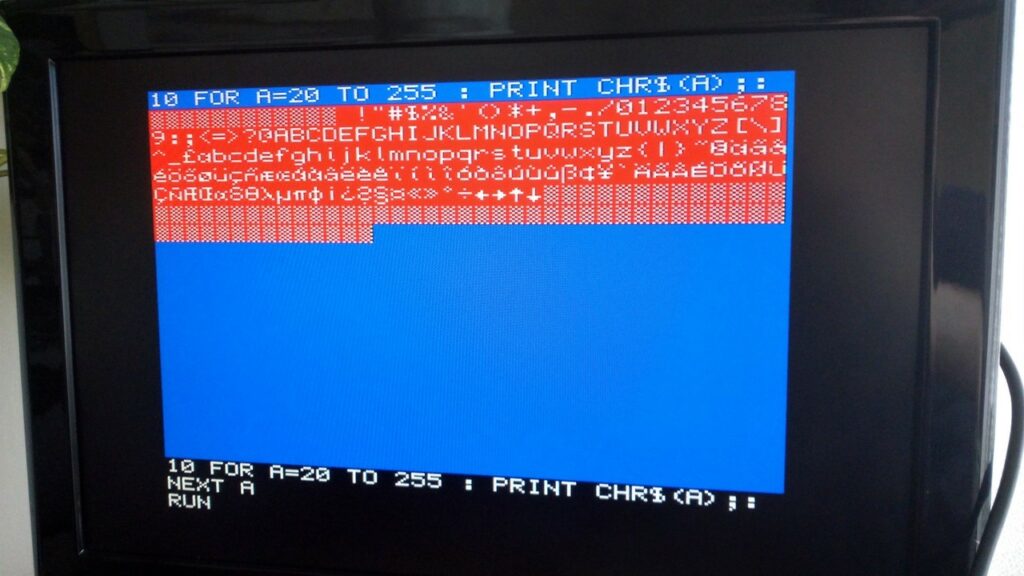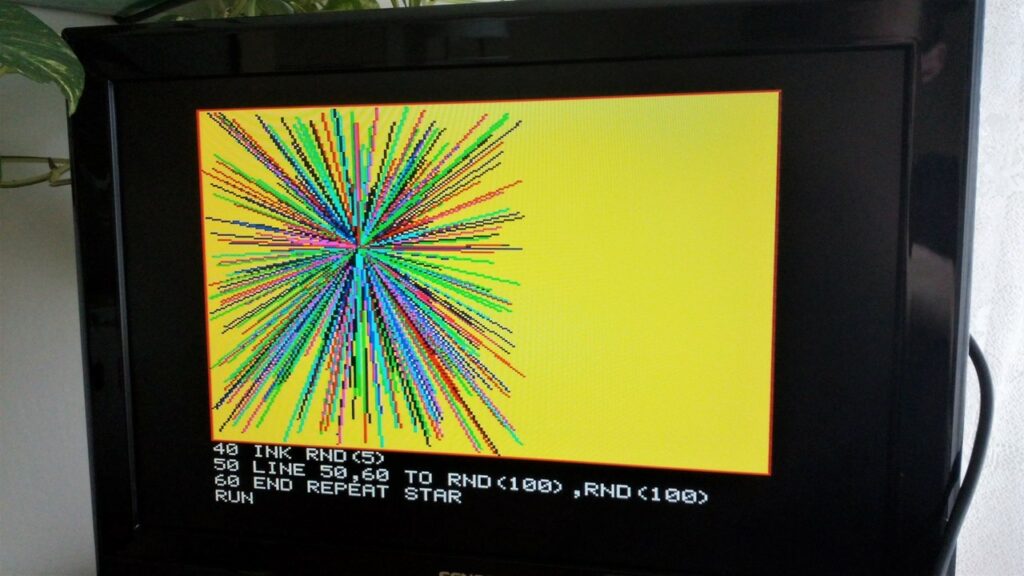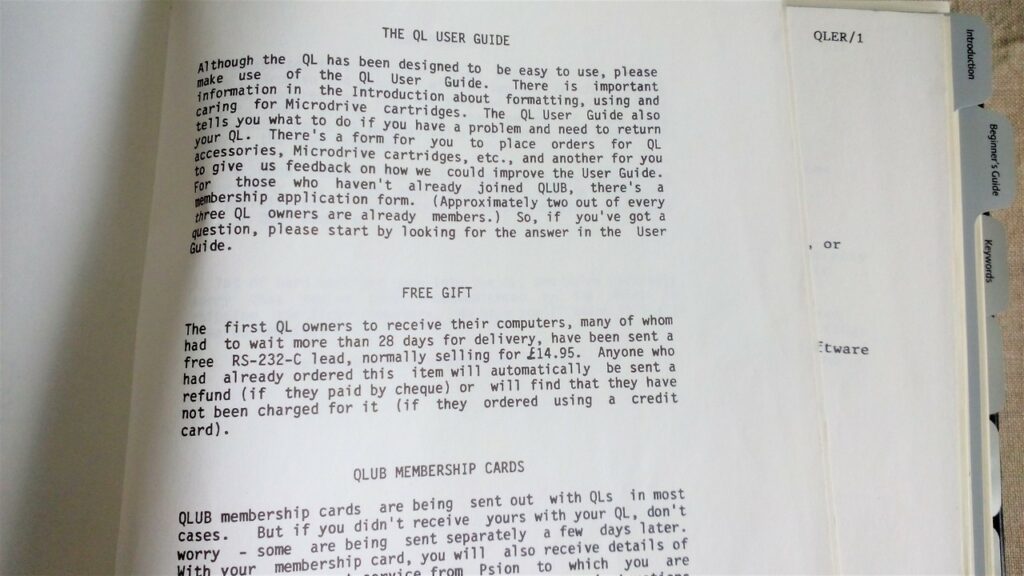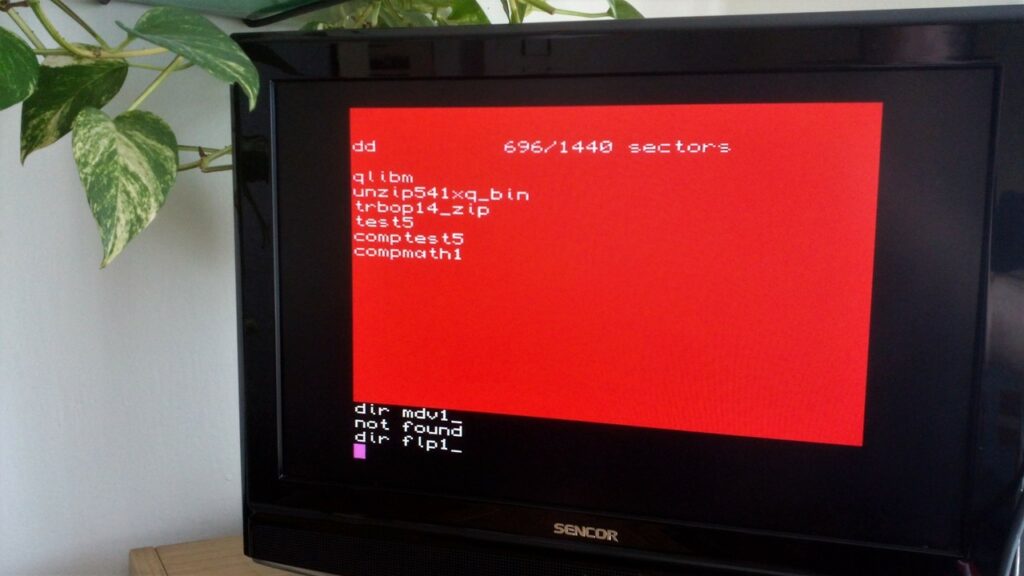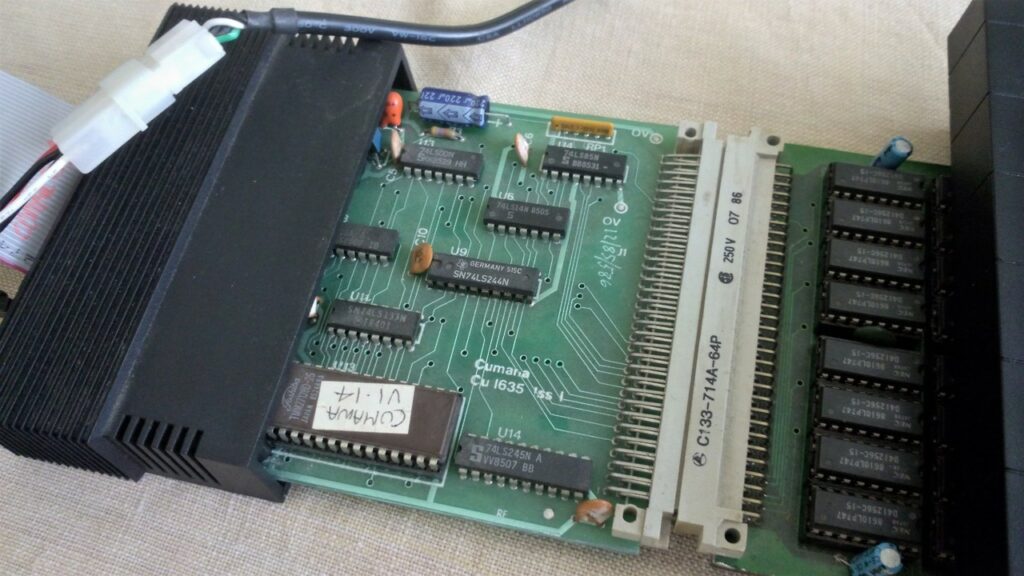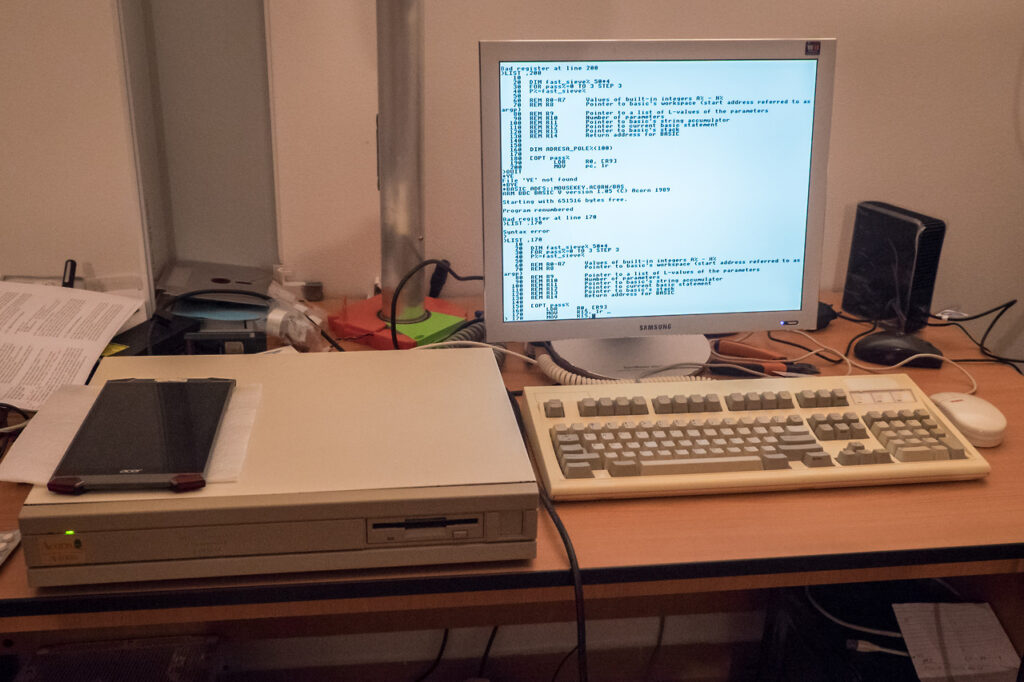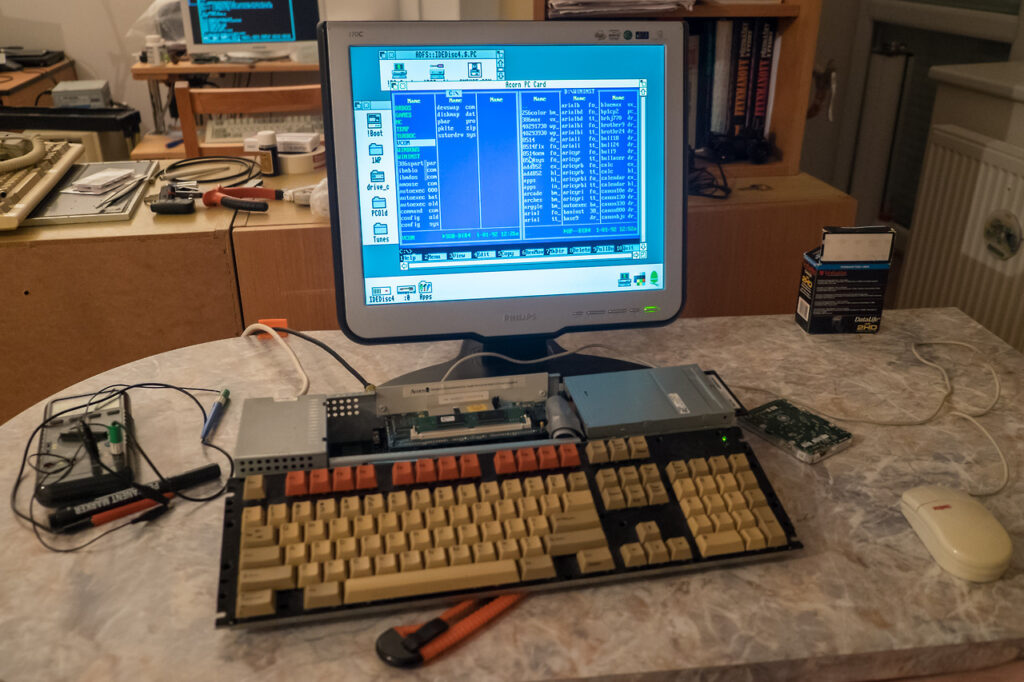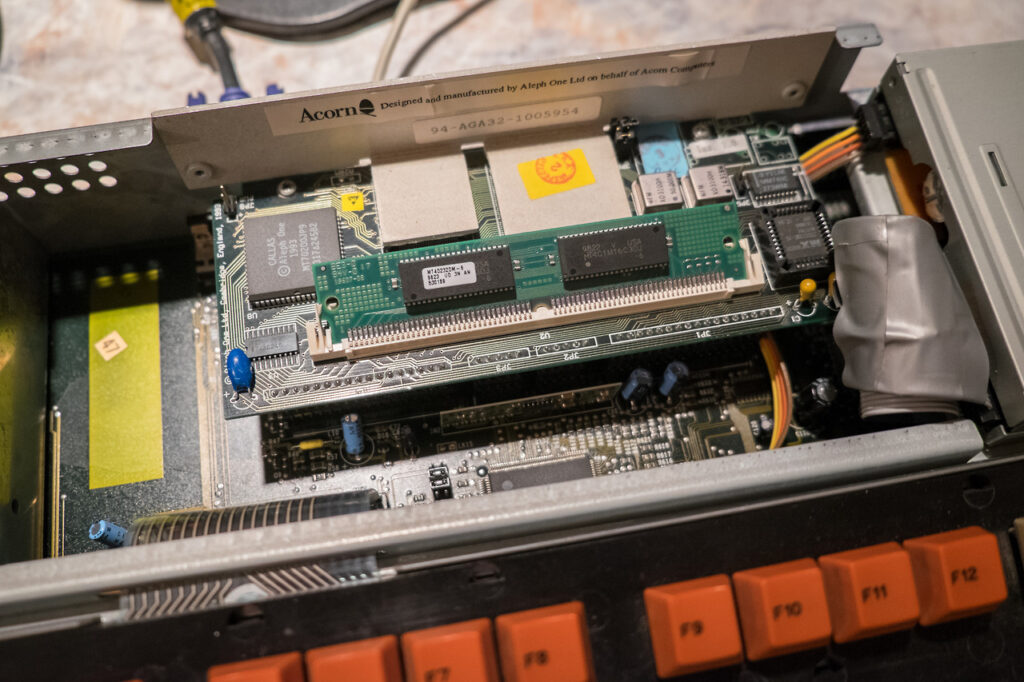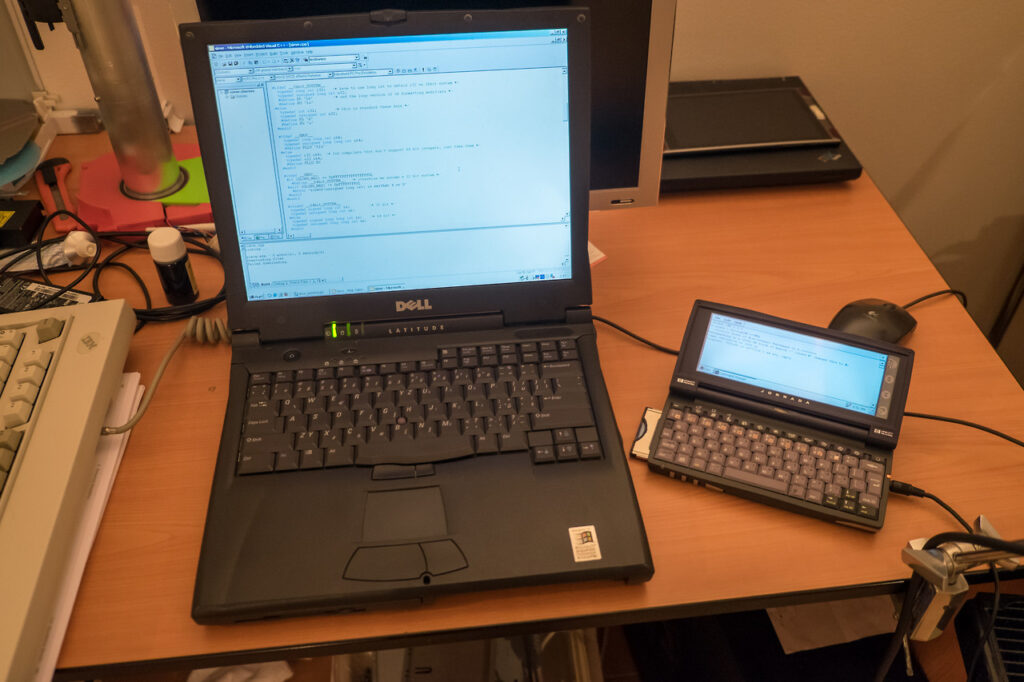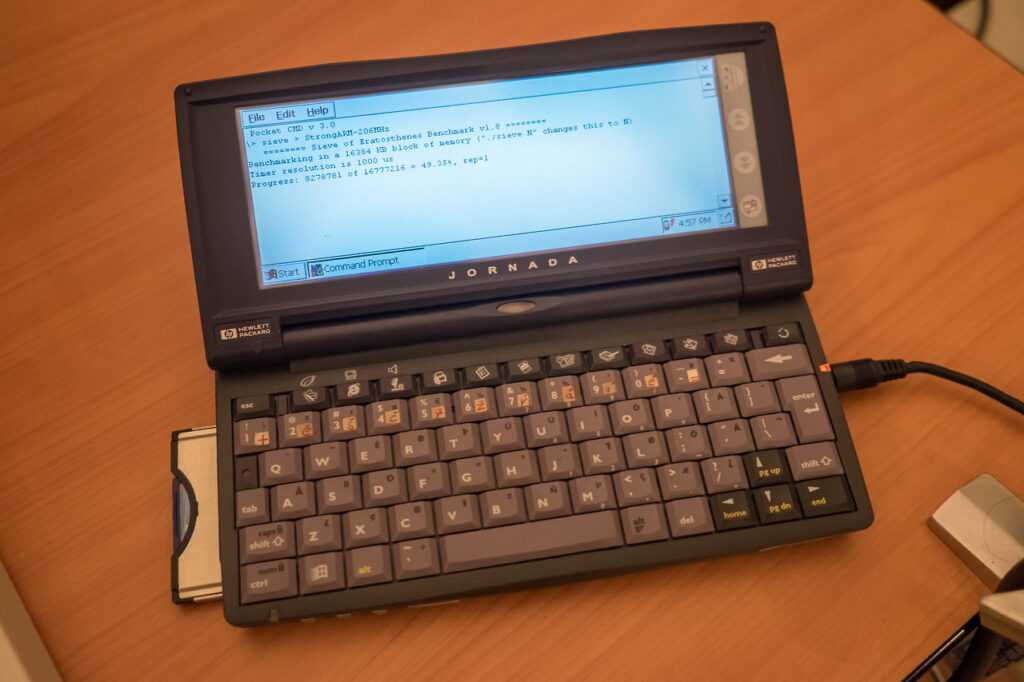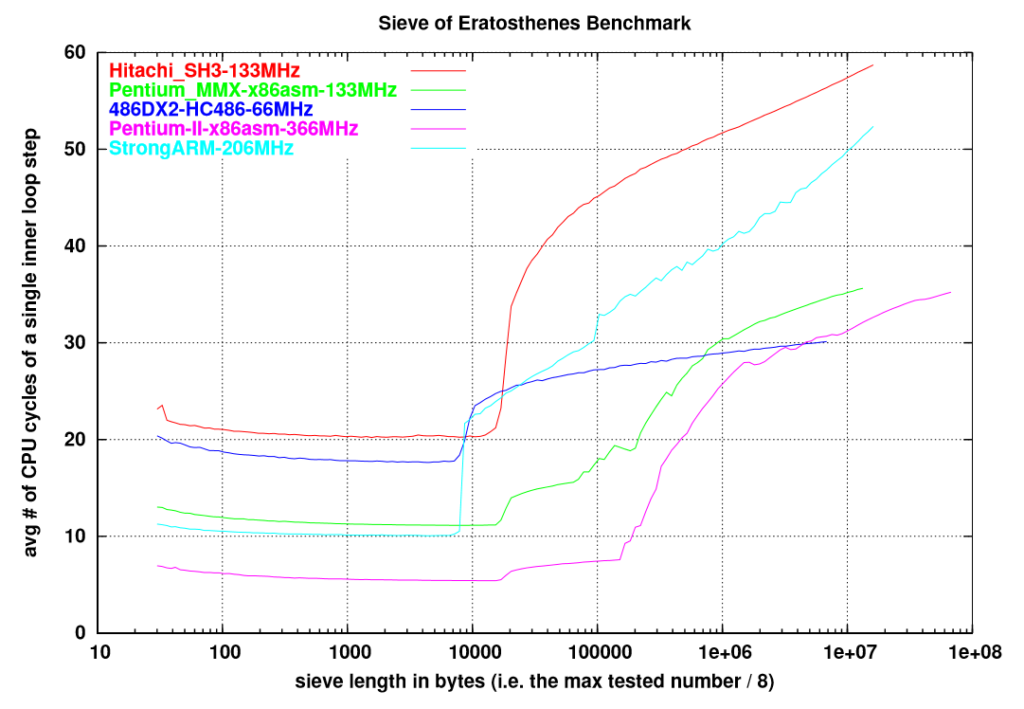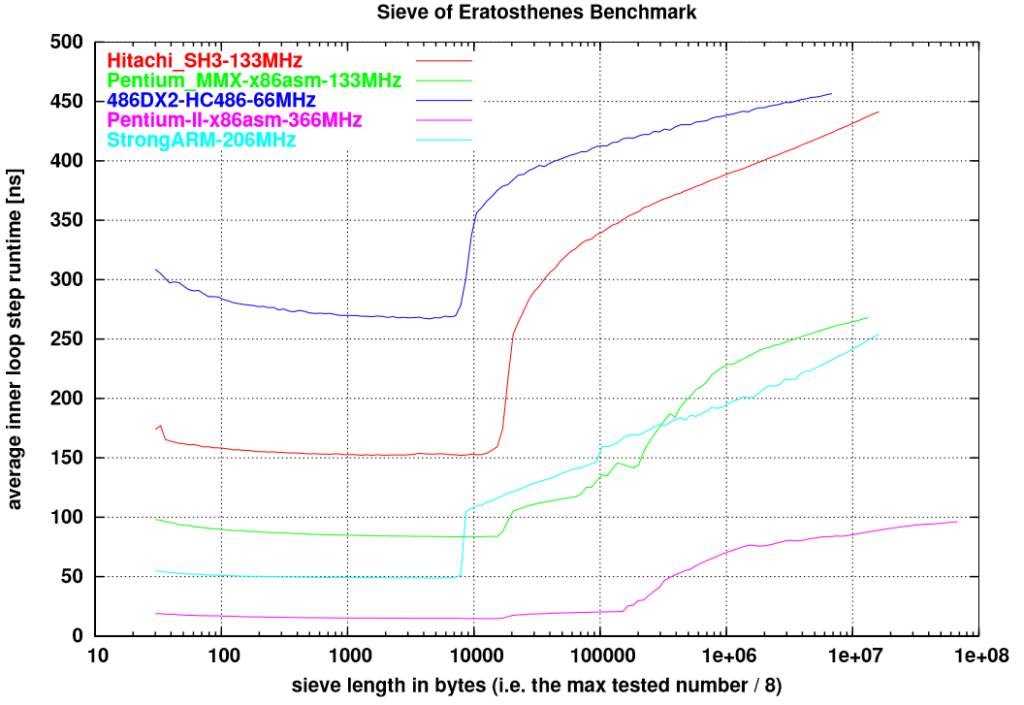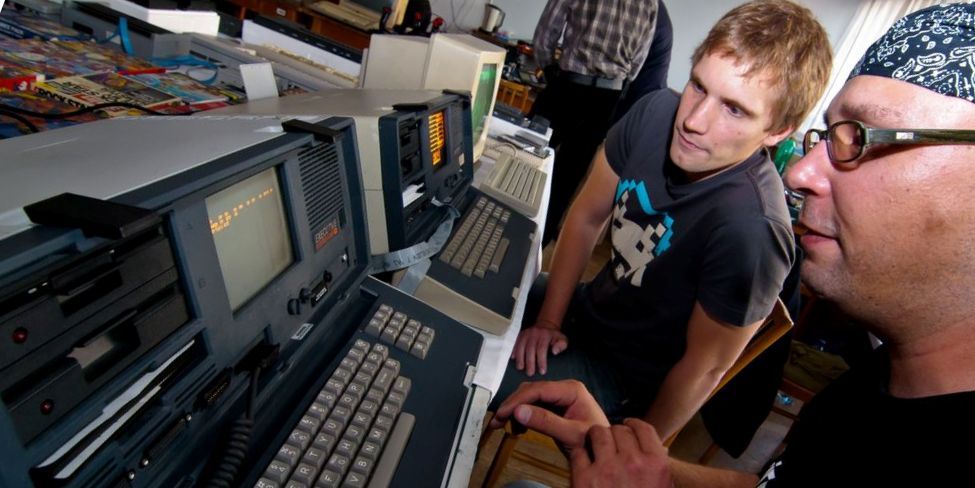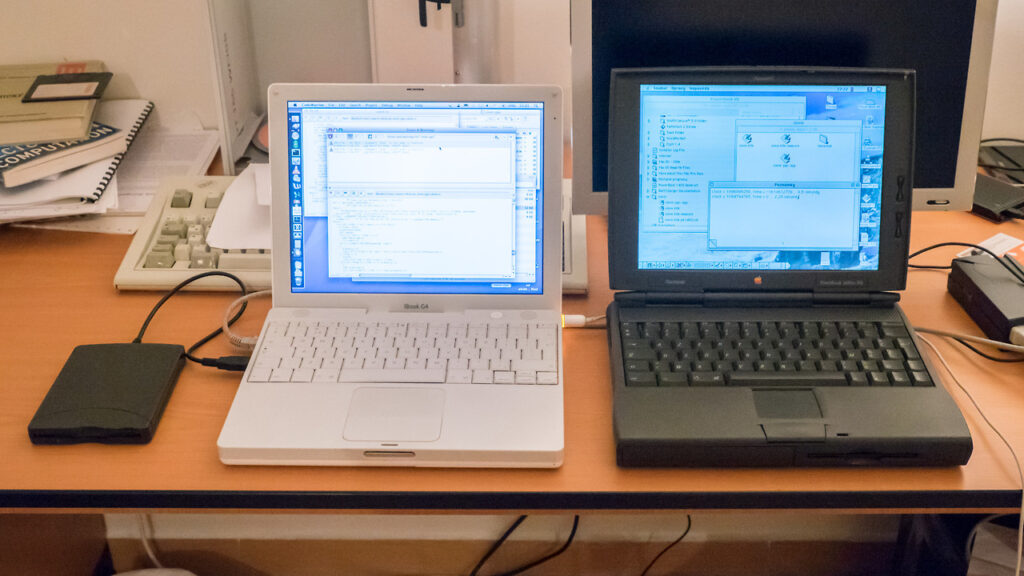Atari XEP80 (1987)
This device allowed users of Atari 8-bit computers to display full 80 characters per row on their screens. XEP80 came too late and used very strange way for connection with the computer – it was attached to a joystick port. It was quite slow with the original driver but there were 3rd-party drivers allowing users to double the screen update speed (matching 9600-baud serial terminals).
It’s a shame that Atari came with the device at the end of the 8-bit Atari series life and implemented it this way. The powerful terminal processor inside could do much more but that would need to connect it using the bus expansion connector. However, that connector changed over time on the 8-bit Atari series so that would affect compatibility. As a result there were not many software packages supporting its 80×24 mode.
Unfortunately, I didn’t have much time to play with the device. I only run bundled demo programs and took these photos (don’t be confused with the Commodore monitor and keyboard). I will definitely take it home one day and try how seriously this could be used back then.
